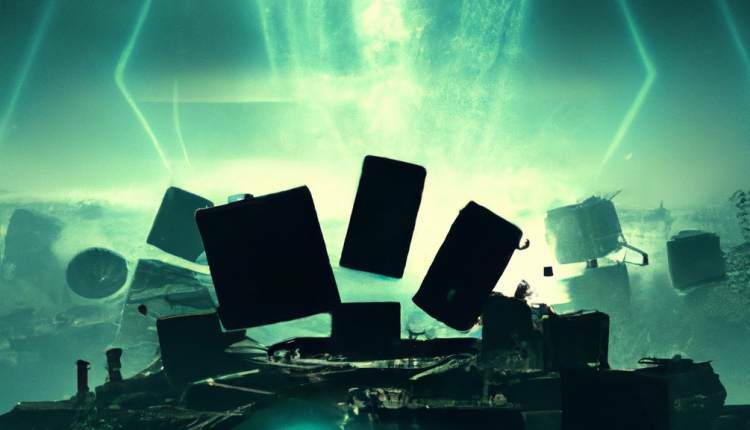Mavens: How positive are blockchain game developers about the rest of 2023?

Welcome to the first edition of BlockchainGamer.biz’s regular Mavens group. If you’d also like to join the discussion, please contact [email protected]
Our ensemble of leaders in the blockchain games industry share their views on the rest of 2023, their projects and by what metrics they measure accomplishment.

Robby Yung – CEO, Animoca Brands
I’m very positive for the rest of 2023. I feel like we’ve turned a corner in the last 6-8 weeks and the market sentiment has clearly picked up, both from a consumer and investor perspective. Keep in mind that “very positive” is also relative to the last 12 months we’ve been through, so improvements are modest in absolute terms.

David Amor – CEO, Playmint
We’re building on-chain games and perhaps less affected by the rise and fall of crypto, nonetheless we feel the bear market like everyone else. Generating revenue is not currently a priority and we care more about who’s in our community and what they’re doing. A unique feature of our game is that the community can extend the game by deploying new smart contracts, so in terms of KPIs I’d be happy if we had 20 people extending the game and 1,000 MAU. We’re looking for product-market fit amongst early adopters.

Mike Levine – CEO, Mystic Moose
The state of current crypto markets has little effect on us releasing our first game and how we judge it.
At Mystic Moose our mission is to create fun, engaging games. And we use web3 and digital collectibles to empower our players.
We will predominantly gauge our success by using traditional Free-to-Play KPIs such as LTV, ARPU, DAU, etc.
As other great games emerge using web3, it’s critical this space can operate independently of day-to-day market conditions or sentiment-du-jour and that we define our own success conditions.

Gabriel Meredith – CEO, Merfolk Games
I think CryptoCrusades is going to continue to gain a cult following in 2023. The market conditions regarding NFT excitement is still significantly slower compared to a couple years ago. Once general excitement has returned, I think we’ll have a wider range of players trying out our game.
That being said, quality over quantity is not necessarily a bad thing for our newly-launched project. CryptoCrusades has had excellent reception among the diehard fans, and that makes us very optimistic about its long-term prospects.
In terms of metrics, we are generally focused on costs of user acquisition, day 1/3/7 retention, and daily/weekly/monthly active users. Monetization comes into play of course, including IAP metrics, but we’re currently more focused on making sure the gameplay experience is engaging.

Jerry Seo – Head of Business, Delabs
I have a favorable outlook regarding the future of the NFT market.
When it comes to developing games, I maintain that the primary focus should be on creating a fun and engaging experience that resonates with a wide range of users. This is the most critical metric, followed closely by meticulous planning and execution to ensure the best possible outcomes. After meeting these fundamental criteria, the most important measures of success are user engagement and the seamless integration of web3 components within the game.

Alexander Goldybin – Founder, iLogos Game Studios
I am absolutely positive about our project’s future for the rest of 2023. This is due to the gradual recovery of the crypto markets, including NFT trading volume, increased adoption of web3 technologies, and some high-quality web3 games, including My NFT Wars, that can showcase fun and engagement over finance and speculation. However, the success of our project will obviously depend on various factors such as the product-market fit, smart use of web3 components, flawless execution, and favourable market dynamics/conditions.
Some of the metrics I would use to measure whether our ambitions are being met are:
– Development progress: the completion of milestones on our development roadmap, ensuring that the project continues to deliver on its promises. Too many web3 gaming projects failed miserably in this regard.
– Community engagement: the level of community engagement on social media. A strong community is crucial for the long-term success of a web3 gaming project.
– Early users’ adoption and their feedback: the number of active players, new registrations, user retention rates, and all feedback we can get from the players. In the early alpha stage less critical compared to community engagement, but later on it becomes the key metric.
– Partnerships and integrations: partnerships and integrations with other projects and platforms in the web3 space. This helps to expand the game’s reach and reinforces its position in the market.
– Revenue generation: the revenue generated from in-game purchases and NFT sales.
– Token performance: the performance of our in-game token, including market cap, trading volume, and price stability. This will provide insights into the health of our game’s economy and its overall perceived value.
– Investor relations: successful follow-on fundraising rounds in case of need.
